Tolkien’s Trees
by
Claudia Riiff Finseth
Tolkien’s Trees first appeared in Mallorn, the Journal of the Tolkien Society of Great Britain, July 1997.
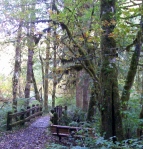 Anyone who has walked in a forest knows there is no better place for adventure. Snow White knew it, and so did Hansel and Gretel. Trees and forests, with all their branches and paths, hollows and hiding places are perfect for suspense, surprise, enchantment and danger.
Anyone who has walked in a forest knows there is no better place for adventure. Snow White knew it, and so did Hansel and Gretel. Trees and forests, with all their branches and paths, hollows and hiding places are perfect for suspense, surprise, enchantment and danger.
In his writings J.R.R. Tolkien gives us all kinds of forests and groves in which to find adventure–and he does more. He ascribes to his individual trees and forests a fantastic variety of meanings and possibilities by drawing from and adding to the rich symbolism of trees that has developed throughout the history of literature. Tolkien describes the trees with which we are familiar–oak, birch, willow–so that we see them with a fresh eye. He creates new trees for us such as we have never seen growing on our earth. He gives us a chance to look at things from a treeish point of view, which is to say, a fresh point of view, and from there he can give an added dimension to his human characters, who define themselves in part through their attitudes towards trees.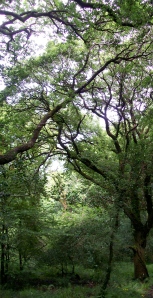
To speak of J.R.R. Tolkien and trees in one breath is to speak of a life-long love affair. From the time he was a boy and played among the trees in the countryside at Sarehole in Warwickshire at the turn of the century until his death at Bournmouth in 1973, Tolkien was, as Galadriel says of Sam the hobbit, a “lover of trees.” (1966 FOTR, p.486). Humphrey Carpenter in his biography (1977, p.24) says of Tolkien,
“. . .And though he liked drawing trees, he liked most of all to be with trees.
He would climb them, lean against them, even talk to them. It saddened him to discover that not everyone shared his feelings towards them. One incident in particular remained in his memory: ‘There was a willow hanging over the mill-pool and I learned to climb it. . .One day they cut it down. They didn’t do anything with it; the log just lay there. I never forgot that.'”
As a lover of trees and a man who abhorred the needless destruction of them, Tolkien the writer often defined his characters as good or evil in part by their feelings about trees. Many of the evil peoples in his stories are tree-destroyers. The orcs heedlessly and mindlessly hew away at the living trees of Fangorn; Saruman destroys the beauty of the Shire by erecting buildings from its trees; and Sauron’s evil presence turns Greenwood the Great to the black and decaying boughs of Mirkwood and makes Mordor so sterile that a tree cannot grow there. (1937, p.310; 1966 TT, pp.308-309). Conversely, among the good peoples of Tolkien’s world are many tree-lovers; one could almost say it is one of the hallmarks of Tolkien’s good people. Galadriel, Legolas and the whole host of Elves show a deep regard for trees, almost as brethren; the Ents and Huorns tend and guard their forests as shepherds protect their sheep; Samwise, the hobbit-gardener, cherishes the soil of Galadriel’s garden, using it to restore his own devastated Shire; Aragorn, rightful King of Gondor, takes as his banner symbol the White Tree (1966 FOTR p.434; TT p.105; ROTK p.150 & 374); and Niggle desires nothing more before he dies than to finish his painting of a tree, Tolkien’s metaphor for one’s life work, for his own writing.
Tolkien’s life was filled from boyhood with the rich symbolism of the great trees of literature. The stories that “awakened desire” in him as a child included “above all, forests.” As a devout Catholic he knew Christ’s metaphor of the vine and the branches, and perhaps even heard some of the many legends of the tree that became the cross.1 As he grew older he discovered the trees of medieval literature, including the cross-tree in the Anglo Saxon poem “The Dream of the Rood”, and the Poetic Edda of Norse mythology with its World Tree, Yggdrasil.2 His concept of trees as growing, living, conscious, feeling beings was nurtured by all of these. Through these also he began to see the literary value of the image of the tree.
One of the earliest literary uses Tolkien makes of trees is in an episode of The Hobbit (1937, pp.109-111) where Bilbo, Gandalf, and the Dwarves, fleeing the orcs of the Misty Mountains, are suddenly surrounded by wargs–evil wolf-like creatures. Luckily, they are in a glade of trees. Jumping into their branches and climbing high, they find refuge and safety as they cradle in the boughs. Even when orcs come and, discovering them above, set the trees ablaze, the topmost branches of the trees provide a miraculous escape. For, only there atop the trees could Gwaihir the Windlord, Lord of Eagles, see them as he circled to investigate the smoke. Summoning his Eagle lords, they pluck the frightened travelers from the burning trees. The trees are refuge, escape, and finally sacrifice for Bilbo and his friends.
These themes of refuge and sacrifice blossom to fullness in Tolkien’s forest of Lothlorien (1966 FOTR pp.432-491). This piece of heaven on Middle Earth is an enchanted land, sustained by the magic of the Lady of the Elves, Galadriel. In Galadriel’s land grow the loveliest trees of all–the Mallorn trees. Their green leaves do not fall in the autumn, but turn golden and sparkle on their silver branches the whole winter-through.
Tolkien’s Silvian Elves set their dwellings, their watchtowers, and even the palace of Galadriel and Celeborn in these glorious trees. The trees are not only their refuge and safety, but all that to them is home and comfort. And Tolkien tells us that the secret of the beauty of the Mallorn trees is that they are beloved by the Elves (1981, p.419).
Lothlorien’s Mallorns also give refuge to Frodo and the Company of the Ring their first night out of the dark and dangerous mines of Moria, and protect them from the avenging orcs (1966 FOTR, p.444-447). The power to protect has been ascribed to other trees in history, most notably the cross. The cross is said in lore to have the power to ward off evil or harm. The cross is also the great symbol of sacrifice and it is not, I think, by chance that the Mallorn trees resemble the shape of a cross with their tall, straight trunks from which the main branches grow almost perpendicular before turning up. At the top the main stem divides into “a crown of many boughs,” (1966 FOTR, p.444) just as Christ wore a crown of thorns on the cross. For with Frodo’s quest, the question of sacrifice comes to the forest of Lothlorien. Whether good or evil avail, the enchanted land and its Golden Wood are doomed now that the Ruling Ring has been found. If the Ring falls to the enemy he will use its power to destroy Lothlorien and all else that’s good in Middle Earth. If Frodo succeeds in destroying the Ring, Galadriel’s power will fade; for her power, held in one of the three Elven rings, is tied to the one Ring. The bitter irony is that Galadriel dare not try to use the Ruling Ring herself, for though it would sustain Lorien for a while, eventually it would hideously corrupt her and all she has made beautiful. Galadriel therefore chooses to sacrifice Lothlorien and its Golden Wood for the chance that the rest of Middle Earth might be saved (1966 FOTR, pp.472-474).
To Tolkien, trees such as the Mallorn are a way to define beauty and life in his terms. It is not just outward appearances, as we discover through Frodo’s experience on the hill of Cerin Amroth in Lorien (1966 FOTR, p.455): “As Frodo prepared to follow him, he laid his hand upon the tree beside the ladder: never before had he been so suddenly and keenly aware of the feel and texture of a tree’s skin and of the life within it. He felt delight in wood and the touch of it, neither as forester nor as carpenter; it was the delight of the living tree itself.”
Tolkien is redefining life for us. It is not to move, to eat, to breathe as we know such things. Intelligence is not simply the ability to talk. The Mallorns do none of these things and yet through Frodo’s touch we sense they are vibrantly alive and keenly aware of all around them. These trees do not DO, but simply ARE, and in that fulfill the definition of “alive” more than many of the beings on Middle Earth who through speech and action bring destruction, despair, and death. Our modern Western world, with its emphasis on mass and fast production, often lacks this value, and Tolkien lamented it.3 Elizabeth Kubler-Ross (1969, p.7) says this is much of the reason for despair in our world; since our value is in what we do, not who we are, as we grow old and lose our abilities, we lose our sense of meaning and purpose.
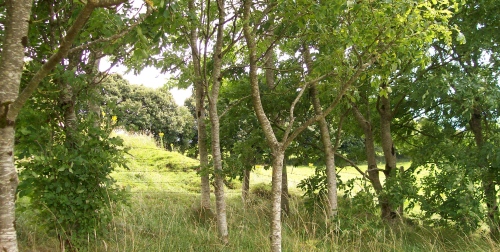
Through Frodo’s experience touching the Mallorn tree, Tolkien also tells us the living, growing tree is more beautiful than anything that could be carved or crafted from it. For Tolkien beauty is in being alive and healthy and whole, in being nurtured and nurturing in return, in the interchange that can be had only between one living thing and another. The trees of the Golden Wood are as beautiful inside as they appear on the outside; they are consistent; they are true. Each green or golden leaf, each yellow flower in spring, each uplifted, branching bough is most beautiful there, on the tree, where it is natural and a part of the whole of living creation. This beauty is apparent in Tolkien’s translation of Treebeard’s Entish description of Lothlorien (1981, p.308); “‘The valley where the trees in a golden light sing musically, a land of music and dreams; there are yellow trees there, it is a tree-yellow land.'”
In sorry contrast stand the Middle Earth forests of Mirkwood and the Old Forest. In these the presence of evil has destroyed all that was live and beautiful.
Mirkwood–the name, Tolkien tells us, is a “Primitive Germanic name. . .black, and from the beginning weighted with the sense of gloom” (1981, p.369)–was once Greenwood the Great. But Sauron settled there for a while, disguised as the Necromancer, and his evil poisoned the great green wood until it became black and dangerous. In Tolkien theology only contortion and perversion result when beauty and life are used for evil purposes, as the evil Ring of power has transformed Smeagol from a hobbit-like being into a hideous and pitiful creature, Gollum. These are echoes of the Garden of Eden, where again trees are center stage, the Tree of Life and the Tree of the Knowledge of Good and Evil. Like Gollum, Adam and Eve gained power but lost innocence because of their inability to refuse the forbidden fruit (they were not as strong as Galadriel), and could never go back to their innocent state. The Garden of Eden was forever closed to them.
Trees with knowledge of good and evil are, in a way, the theme of the Old Forest. Frodo and his friends plunge into the Old Forest to escape pursuit by the nine ringwraiths, only to find a different danger awaiting them (1966 FOTR, pp.165-169). This forest’s knowledge of man’s (and hobbit’s) ways has turned it’s “heart” to hatred, and hatred seems always to lead to evil. We learn from Tom Bombadil (1966 FOTR, pp.181): “Tom’s words laid bare the hearts of trees and their thoughts, which were often dark and strange, and filled with a hatred of things that go free upon the earth, gnawing, biting, breaking, hacking, burning; destroyers and usurpers.” The trees of the Old Forest have come to hate free creatures as the enemies who destroy them. Their hate is long-learned; some were ancient trees that lived and were lords before man walked the earth and began destroying. Tolkien says in a letter that “The Old Forest was hostile to two-legged creatures because of the memory of many injuries” (1981, p.419).
Tom Bombadil tells us the Old Forest is under the dominion of Old Man Willow (1966 FOTR, p.168), (inspired by an Arthur Rackham drawing–1977, p.181) who has great cunning and a rotten heart. His power spread “like fine root-threads in the ground, and invisible twig-fingers in the air, till it had under its dominion nearly all the trees of the Forest. . .” (1966 FOTR, p.181).
 Here malice is in the forest itself, personified in Old Man Willow, and not an outside influence like Sauron. Sauron has never been here. Tolkien, complaining about a BBC broadcast in which Old Man Willow was described as an ally of Mordor, wrote: “Cannot people imagine things hostile to men and hobbits who prey on them without being in league with the Devil!” (1981, p.228). Tolkien felt there is a malice implicit in the cosmos itself, of which Sauron is only one part. This is reminiscent of the cold and brutal world of Norse mythology, which Tolkien knew well (1977, p.72). The undertones of Ragnarok, the final war of the world in which the Norse heroes will lose to the evil frost giants, is always present, lending a certain dark pessimism to Tolkien’s own mythology. Even though in his version good ultimately triumphs, his hero is irreparably wounded. His mythology is also deeply influenced by Christian doctrine: for though his hero is wounded as a sacrifice to save Middle Earth, there is a resurrection of sorts waiting for him beyond the Grey Havens, a heaven and eternal life, if you will, beyond the westering seas.
Here malice is in the forest itself, personified in Old Man Willow, and not an outside influence like Sauron. Sauron has never been here. Tolkien, complaining about a BBC broadcast in which Old Man Willow was described as an ally of Mordor, wrote: “Cannot people imagine things hostile to men and hobbits who prey on them without being in league with the Devil!” (1981, p.228). Tolkien felt there is a malice implicit in the cosmos itself, of which Sauron is only one part. This is reminiscent of the cold and brutal world of Norse mythology, which Tolkien knew well (1977, p.72). The undertones of Ragnarok, the final war of the world in which the Norse heroes will lose to the evil frost giants, is always present, lending a certain dark pessimism to Tolkien’s own mythology. Even though in his version good ultimately triumphs, his hero is irreparably wounded. His mythology is also deeply influenced by Christian doctrine: for though his hero is wounded as a sacrifice to save Middle Earth, there is a resurrection of sorts waiting for him beyond the Grey Havens, a heaven and eternal life, if you will, beyond the westering seas.
Unlike Mirkwood, the malice of the Old Forest trees is not thoughtless, their hate is not unjustified. And yet this wood is, after all, evil. Evil because it has let its sorrow and pain be turned to malice, hate and destruction in turn. It has become no better than those who would destroy it, and can even no longer differentiate between those who mean it ill and those who simply want to pass through, like Frodo and his companions. Its prejudice is blind. This is a sad commentary on what bitterness can do, and in men as much as in trees. There is many an Old Man Willow in the human world, who instead of gaining wisdom and understanding from his trials, has gotten only a rotten heart. The trees of the Old Forest have not only become evil, but they have become unnatural. They do untreeish things that go against the laws of nature, even in Middle Earth: they move about, they stifle the air instead of replenishing it, they trap people inside themselves as if they had become carnivores (1966 FOTR, p.159 & 166). What is more, these trees have become unnatural in a moral sense; they go against the laws which pertain to moral rightness or justice by preying on innocent hobbits with singularly cruel intent. They no longer resemble trees except in appearance; a sharp contrast to the true heart that Frodo feels within the Mallorn tree of Lorien.4
 Ages of trial and sorrow have brought wisdom and understanding to one forest on Middle Earth: the small and peculiar forest of Fangorn near Rohan. Here reside the Ents, and of all Tolkien’s marvellous creations, the tree-like Ents are arguably the strangest and most wonderful.
Ages of trial and sorrow have brought wisdom and understanding to one forest on Middle Earth: the small and peculiar forest of Fangorn near Rohan. Here reside the Ents, and of all Tolkien’s marvellous creations, the tree-like Ents are arguably the strangest and most wonderful.
Ents are the oldest of the mortal races that walk Middle Earth. Although at first glance they are easily mistaken for trees such as oak, fir, or rowan, they are in reality a tall troll-size creature that can move about. (Trolls are counterfeits made by the Enemy in the Great Darkness in mockery of Ents.). They have two legs and two arms which sprout long toes and fingers, very stiff but bendable joints, and “all had the same eyes. . .with the same slow, steady, thoughtful expression, and the same green flicker.” (1966 TT, p.119) Some Ents have grown sleepy and treeish, and are known as Huorns. The Ents are the shepherds of Fangorn forest. Although old, old and musty, it is not an evil forest, for the Ents are not an evil kind. They are one of the four original races made by the Creator: Elves, Ents, Dwarves, and Men. Legolas the Elf, who can sense good and evil intuitively, tells us of Fangorn (1966 TT, p.119):
“I do not think the woods feel evil. . .No, it is not evil; or what evil is in it is far away. I catch only the faintest echoes of dark places where the hearts of the trees are black. There is no malice near us, but there is watchfulness, and anger.”
Treebeard, the oakish Ent5, is the guardian of Fangorn and the eldest of all his race. He seems to be not centuries, but millennia old. Treebeard has suffered much sorrow in his long life. He has seen the Entwives disappear from the face of Middle Earth, and he grieves for them and the Enting offspring which will never be. He has watched Saruman hack and destroy the trees he has lovingly tended. Like Old Man Willow, he has reason to distrust two-legged creatures, but Treebeard has not let it turn to blind hate, and so he spares the lost hobbits Merry and Pippin when he sees they are not harmful beings, even though he is close to the boiling point over Saruman the wizard’s desecration of his trees (1974, p.99). He eventually spares even Saruman out of his great regard for the sacredness of life, refusing to kill anything or anyone hastily. Pippin describes Treebeard for us by looking into his eyes (1966 TT, p.83):
“One felt as if there was an enormous well behind them, filled up with ages of memory and long, slow, steady thinking; but their surface was sparkling with the present: like sun shimmering on the outer leaves of a vast tree, or on the ripples of a very deep lake. I don’t know, but it felt as if something that grew in the ground–asleep, you might say, or just feeling itself as something between root-tip and leaf-tip, between deep earth and sky–had suddenly waked up, and was considering you with the same slow care that it had given to its own inside affairs for endless years.” 
Treebeard’s wise and generous refusal to act hastily is one of the great traits of the Ents. At first, though, it seems merely a humorous characteristic. Treebeard’s constant chiding of the impetuous hobbits “not so hasty, now!” (1966 TT, p.85) makes us laugh. When the Entmoot, the council of the Ents, carries on for days and all that’s been accomplished is the introductions, we begin to think, like Pippin and Merry, that they will never finish in time to help the quest. This Entish abhorrence of hastiness; the slow, steady, day-long, night-long deliberation of the Entmoot; even the deep, melodic “Hrum, hoom” of Treebeard, all embody the antithesis of modern society with its emphasis on speed and mass production–things that troubled Tolkien. In fact, Treebeard sounds very Tolkienish when he says of Saruman, “He has a mind of metal and wheels; and he does not care for growing things.” (1966 TT, p.96)6 Contrary to modern society, Tolkien did not equate slowness with ineffectiveness, nor technology with wisdom or moral superiority. In a paradoxical twist that illuminates the tragedy of our own machine age, Tolkien makes modern man seem strangely immobile and impotent compared with the Ents once they have made a decision to act. As the Entmoot ends, we begin to see a power in the Ents that surprises us–an emotion that humbles us. As he and Pippin watch the Entmoot, discussing whether the Ents will be able to aid in the fight against evil, Merry says it in this way (1966 TT, p.107):
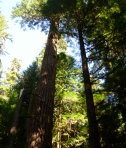 “But I have an odd feeling about these Ents: somehow I don’t think they are quite as safe and, well, funny as they seem. They seem slow, queer, and patient, almost sad; and yet I believe they could be roused. If that happened, I would rather not be on the other side.”
“But I have an odd feeling about these Ents: somehow I don’t think they are quite as safe and, well, funny as they seem. They seem slow, queer, and patient, almost sad; and yet I believe they could be roused. If that happened, I would rather not be on the other side.”
Of all Tolkien’s creations, perhaps Treebeard is most like him. Tolkien himself disputes this, claiming in one of his letters (1981, p.190), “Treebeard is a character in my story, not me. . .” But nonetheless, Tolkien was, at this time, a man who was feeling the years of his age ring around him ever greater. He did not know or understand the latest technology, nor did he want to. His life was that of a bygone day, his memories of simpler times, like that of Treebeard. There is perhaps in Treebeard’s lament for the days of the Entwives not just a little of Tolkien’s own philosophy on life. At the death of his friend, C.S. Lewis, on whose booming voice Tolkien had modeled Treebeard’s way of speaking, Tolkien wrote to his daughter, “So far I have felt the normal feelings of a man my age–like an old tree that is losing all its leaves one by one: this feels like an ax blow near the roots.” And like the old, wise, slow and careful, tree-loving treeherd, Tolkien had spent decades painstakingly and lovingly creating the mythology that would become his books. Most of all similarities, though, Tolkien also loved trees.

Whether an extension of Tolkien himself or not, Ents and Huorns, as living, walking relatives of trees, bring us more closely in touch with trees, as if through Ents we might begin to understand trees as the living things they are. Although we first view them as comic, we grow to love, and finally respect, even fear and be in awe of, the Ents. In this way Tolkien cultivates in each of us a little patch of his great love for trees. Carpenter (1977, p. 219) calls Treebeard “. . .the being who was the ultimate expression of Tolkien’s love and respect for trees.”
The suffering and sorrow of the trees of Middle Earth echo a tradition in literature of trees that have the capacity for pain and joy. The Anglo Saxon poem The Dream of the Rood, from around the eighth century, tells of how the cross shared Christ’s passion. Forced to be the instrument of Christ’s death, it suffered the nail wounds, spear thrusts and drenching bloodstains together with the Savior to fulfill God’s will. The idea of a tree that can feel compassion was not new, even then. Yggdrasil, the World Tree of the Norse Edda, “suffers more than men know,” (1930, p.33) having its roots constantly gnawed by creatures below, its leaves eaten from above (1962, p.60). What is more, it nourishes gods and men with the life-giving honey-dew that it drips; it shelters and gives birth to new life. The suffering and sacrifice of these trees is surprising. Yet, though men are often ignorant to the suffering of trees, the trees of Middle Earth often know and fell the suffering of the free-peoples. They are healthy and strong where the free-peoples prosper, and wither where there is death (1961, p.39). Their fate is linked to the peoples’ fate, like Yggdrasil, source of unborn souls (1969, p.112). It is an inter-connection that has since been born out by modern science, the delicate balance of the ecosystem.
Such is the life of the White Tree of Gondor. When Gondor flourishes under a rightful and true king, the tree flourishes; when Gondor declines, the tree withers away (1966 ROTK, p. 408. Thus the tree becomes something of a barometer of whether things are right in the land. If you can learn to read the trees, you can learn to read the hearts of the people, or at least the leaders, of the land.
The White Tree of Gondor is so sensitive to human conditions that it will not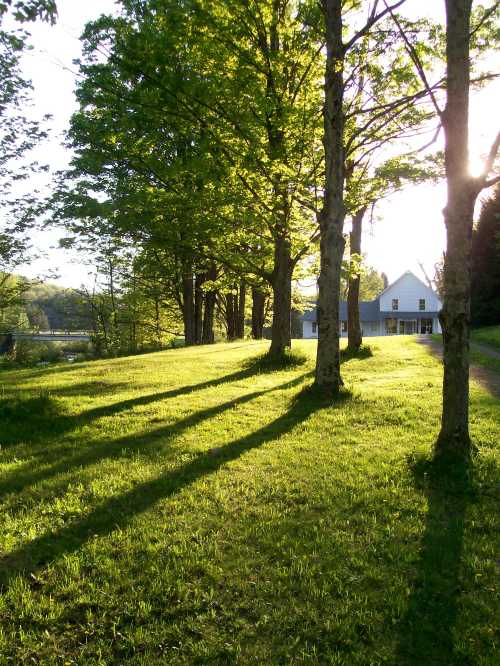 flourish simply if a good man rules, but only if that man is the bloodline heir to the throne–the One Rightful King. The real test for Aragorn, heir apparent, is not his courage in battle, nor his powers to heal, nor even his wisdom to rule; Aragorn waits and watches for the withered tree in the Court of the Fountain to blossom once again (1966 ROTK, pp.307-309). Aragorn trusts in the tradition of the sign of the tree, showing anxiety at the thought that the tree might not return, but never doubting it to be the final confirmation of his kingship. (Men, after all, do not possess the patience of the Ents.) Why does Aragorn trust so in the tree? Maybe because he is a Ranger, who has lived in and studied nature his whole life, and who in so doing is more in touch with living things than most men. Perhaps it is the Elven blood that runs in his veins, for Elves co-exist in a deep bond with nature. It is also because he is wise.
flourish simply if a good man rules, but only if that man is the bloodline heir to the throne–the One Rightful King. The real test for Aragorn, heir apparent, is not his courage in battle, nor his powers to heal, nor even his wisdom to rule; Aragorn waits and watches for the withered tree in the Court of the Fountain to blossom once again (1966 ROTK, pp.307-309). Aragorn trusts in the tradition of the sign of the tree, showing anxiety at the thought that the tree might not return, but never doubting it to be the final confirmation of his kingship. (Men, after all, do not possess the patience of the Ents.) Why does Aragorn trust so in the tree? Maybe because he is a Ranger, who has lived in and studied nature his whole life, and who in so doing is more in touch with living things than most men. Perhaps it is the Elven blood that runs in his veins, for Elves co-exist in a deep bond with nature. It is also because he is wise.
When, finally,
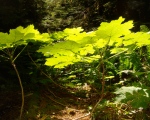
Gandalf takes Aragorn up into the mountains and shows him a slender white sapling in the snow, a sense of fulfillment wells in
us all. The tree is found; the world is right for now. The first sign that the time is imminent is the Elven-woman Arwen’s gift of a banner with “seven stars and seven stones and one white tree” (1966 ROTK, p.27), sent as Frodo nears Mt. Doom and the last battle approaches. When Frodo’s quest is over and Mordor has been defeated, the last sign that is awaited to indicate the world has been set right is the return of the living White Tree to the courtyard.
The living White Tree is the final symbol of recovery for Gondor, a country that looked at one time as though it were in its last decline. This is significant to Tolkien’s theory on the importance of fantasy in general. Tolkien saw fantasy as a potent form of art that, through the powers of sub-creation and enchantment, could provide readers with the healing gifts of recovery, escape, and consolation. These are all gifts that Tolkien’s trees bear to Middle Earth. As Hans Christian Andersen said, “green is good for the eyes” (1981 Lewis, p.91), so Tolkien might have added: and for the heart.7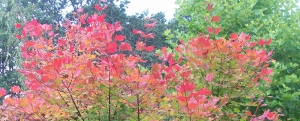
Tolkien saw trees and his art of fantasy as closely resembling each other, so closely that Tolkien found the tree the perfect metaphor for his art in two short stories, Smith of Wooten Major and Leaf by Niggle. In fairyland Smith glimpses the King’s Tree, which “Bore at once leaves and flowers and fruits uncounted, and not one was the same as any other. . .” (1966 SWM, p. 28). This is the same tree that Niggle, in his story, tries to paint, each leaf the same and yet totally different. In Niggle’s story the tree is an allegory for writing, for story-telling–for Tolkien’s own writing, and in a broader sense for the Tree of Tales. In his essay “On Fairy-Stories” (which together with “Leaf by Niggle” makes up a volume Tolkien titled Tree and Leaf), Tolkien gives encouragement to the would-be writer of fantasy in this way (1966 TR, p.76):
“It is easy for the student to feel that with all his labor he is collecting only a few leaves, many of them now torn or decayed, from the countless foliage of the Tree of Tales. . .Who can design a new leaf? The patterns from bud to unfolding, and the colours from spring to autumn were all discovered by men long ago. But that is not true. . .”
He goes on to say that, although seasons and leaves–and tales–may be very similar, no two are ever exactly the same, and one particular one may touch someone in a way that all similar ones just can’t quite.
Except for Andersen’s lovely metaphor of The Tree of Poetry in “The Goblin at the Grocer’s” (1981 Lewis, p.160), Tolkien’s use of the tree as the representative of his art was unique for his time. This tells us perhaps more than anything how very much he loved trees. He chose them to symbolize the art that was the very purpose of his life. To Tolkien art was as alive as trees and trees as precious as art. He looked upon both as gifts and friends.8
Tolkien said, “In all my works I take the part of trees as against all their enemies.” (1981, p.419). He saw this feeling for trees as an awareness of universal mans’ deepest desires: “to hold communion with other living things, survey the depths of space and time, and to explore strange languages, glimpses of an archaic mode of life, and, above all, forests.” (1974, p.14). To understand this desire and to yield to it is to gain the wisdom of wizards, who “believe that the wise man is one who never sets himself apart from other living things, whether they have speech or not” and “learn what can be learned, in silence, from the eyes of animals, the flight of birds, the great slow gestures of trees.” (1969 LeGuin, p.82). In his love for trees Tolkien shared in the wisdom of the wise. Through his art he endeavors to share that wisdom with us, hoping that we, like Niggle’s friend Parish, might find ourselves more aware of trees as living things, as works of art and beauty, and as sensitive and feeling in their own way. If then, we catch ourselves listening suddenly to the rustle of leaves or the creaking of branches, noticing the subtle change of colors through the passing of seasons, or the especially pleasing symmetry of the crown of an oak, perhaps even nodding a smile to the occasional sway of a bough in our directing, Tolkien would approve.
________________________________________________________
BIBLIOGRAPHY
Abrams, M. H., General Editor, The Norton Anthology of English Literature, Third Edition, New York: W. W. Norton & Co., Inc., 1974.
Carpenter, Humphrey, Editor. The Letters of J. R. R. Tolkien. Boston: Houghton Mifflin Co., 1981.
Carpenter, Humphrey. Tolkien: A Biography. New York: Ballantine Books, 1977.
Ellis Davidson, H. R. Scandinavian Mythology. London: Hamlyn Publishing, 1969.
Ferguson, George. Signs and Symbols in Christian Art. New York: Oxford University Press, 1961.
Hamer, Richard. A Choice of Anglo Saxon Verse. London: Faber & Faber, 1970.
Helms, Randal. Tolkien’s World. Boston: Houghton Mifflin Co., 1974.
Kocher, Paul. Master of Middle Earth. New York: Ballantine Books, 1972.
Kubler-Ross, Elisabeth. On Death and Dying. New York: MacMillian Publishing Co., 1969.
Lewis, Naomi, translator. Hans Andersen’s Fairy Tales. New York: Penguin Books, 1981.
MacDonald, George. “The Fantastic Imagination.” A Dish of Oats. London: Edwin Dalton, 1908.
Olrik, Axel. Viking Civilization. New York: W. W. Norton & Co., 1930.
Tolkien, J. R. R. The Hobbit. New York: Ballantine Books, l937.
Tolkien, J. R. R. The Lord of the Rings: The Fellowship of the Ring, The Two Towers, The Return of the King. New York: Ballantine Books, 1966.
Tolkien, J. R. R. Smith of Wooten Major and Farmer Giles of Ham. New York: Ballantine Books, 1967.
Tolkien, J. R. R. The Tolkien Reader. New York: Ballantine Books, 1966.

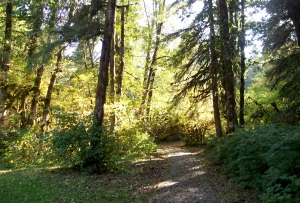

Hi Claudia, I just noticed your ast name. Believe it or not I’m actually looking for someone named Hal Finseth. I suspect he’s very old or not alive but who knows. Do you happen to know of a Hal Finseth? Please let me know. Thank you.
Robert Pfeiler
714-307-7633
By: Robert on February 3, 2012
at 12:32 am
Hi Robert,
I do not know of a Hal Finseth anywhere in my husband’s family.
Best,
Claudia
By: claudiafinseth on March 23, 2013
at 8:07 pm
Lovely essay! Is it okay that I linked it in a blog: http://savscatola.blogspot.co.uk/2013/03/the-picasso-tree.html
Thanks
Sav Scatola
By: Sav Scatola on March 23, 2013
at 8:53 am
Hi Sav,
Thank you for your kind words about the essay. I am delighted you want to link it to your essay. Anyone who loves trees is a friend.
Best,
Claudia
By: claudiafinseth on March 23, 2013
at 8:09 pm
Thank you Claudia, friend, I am most grateful.
By: Sav Scatola on March 24, 2013
at 5:16 am